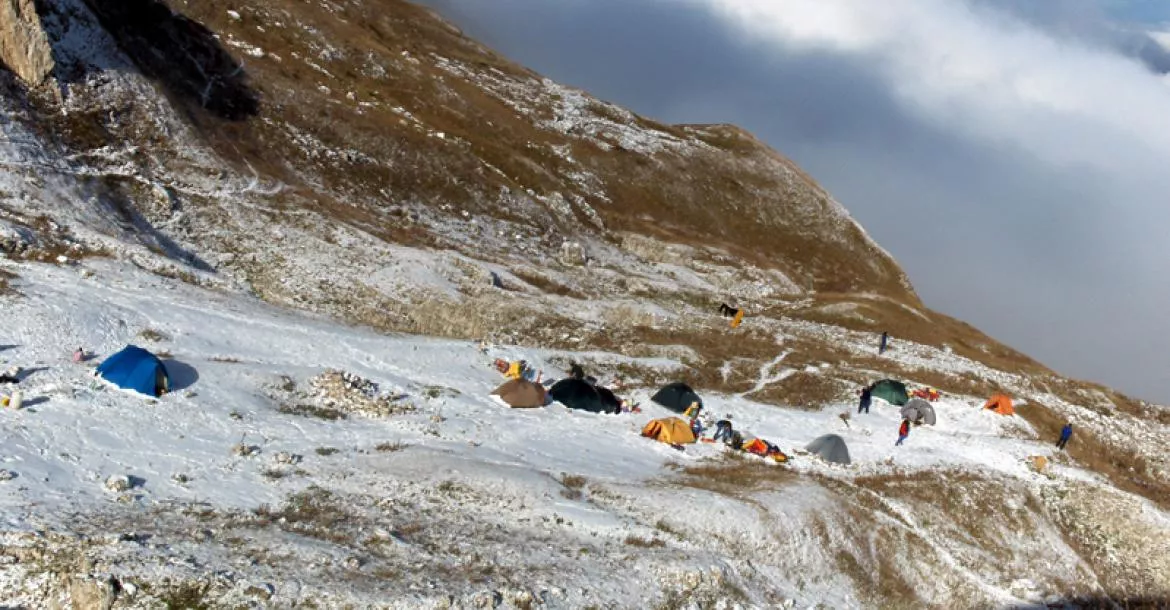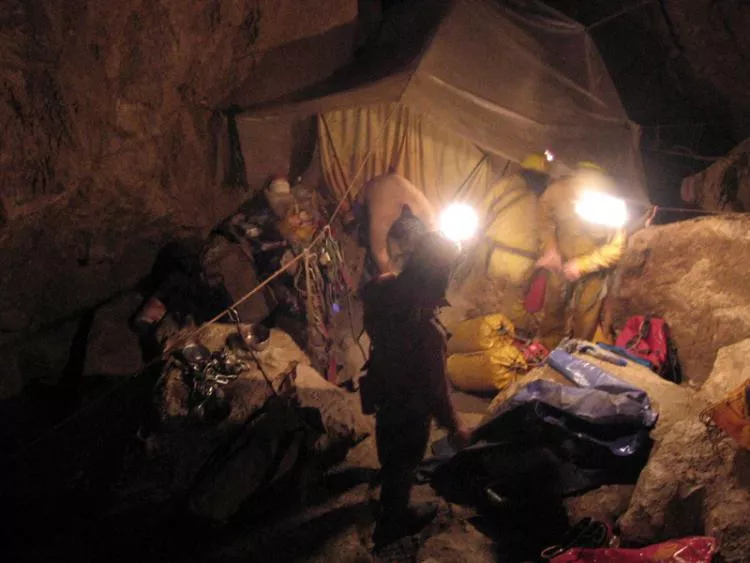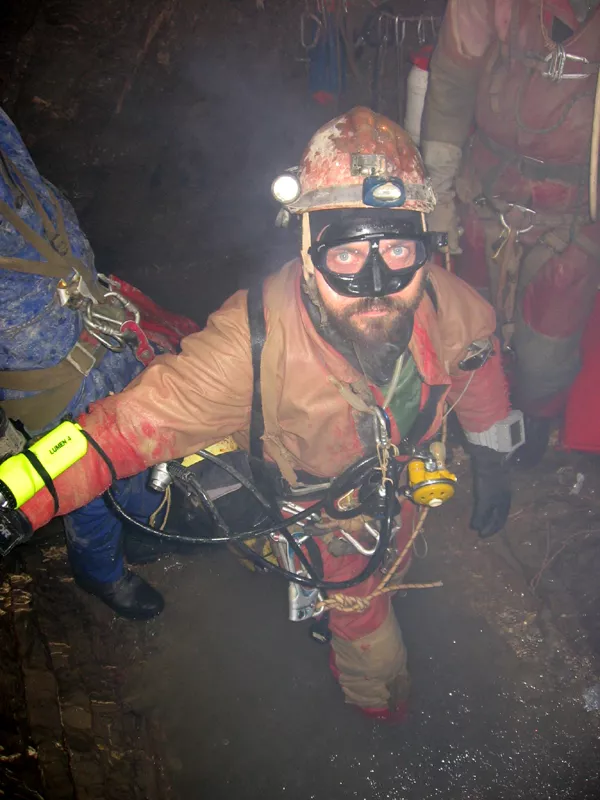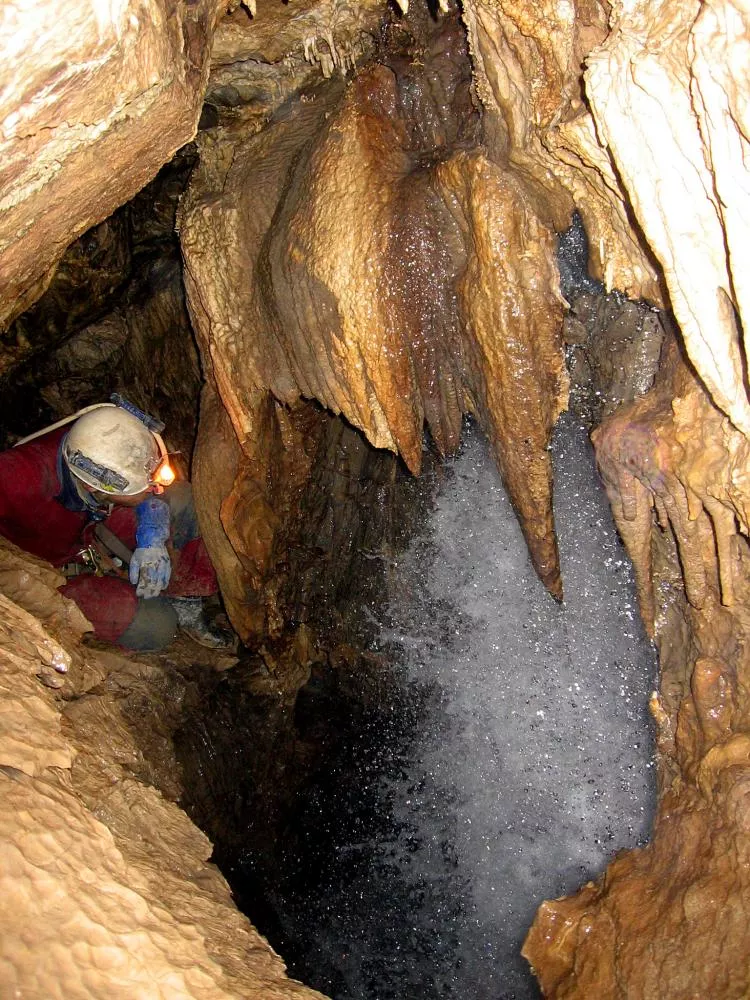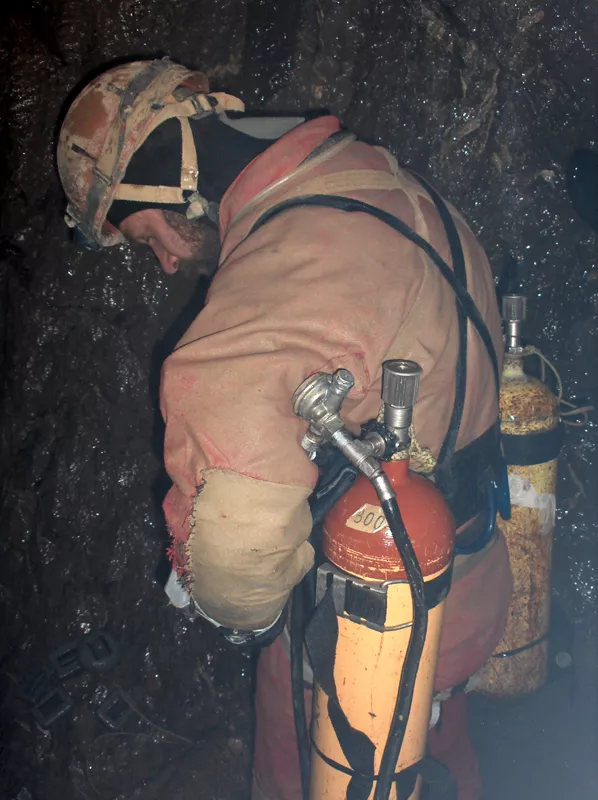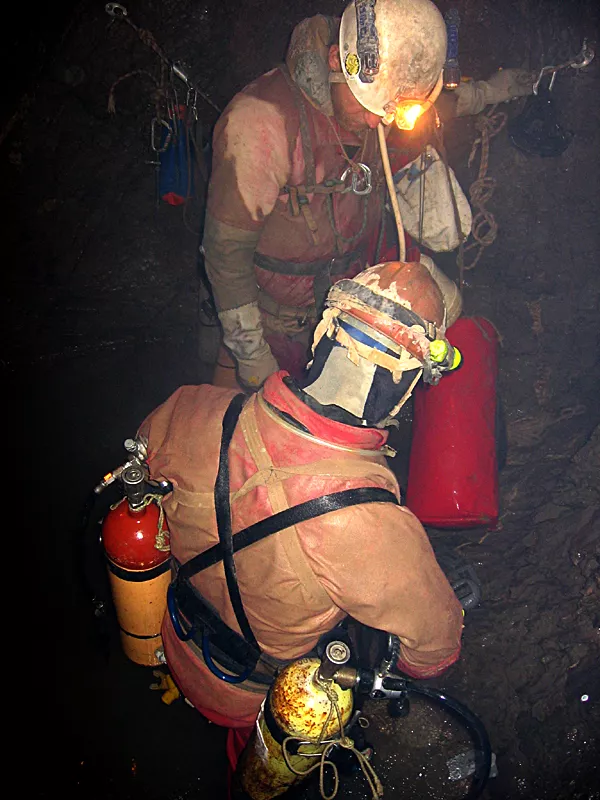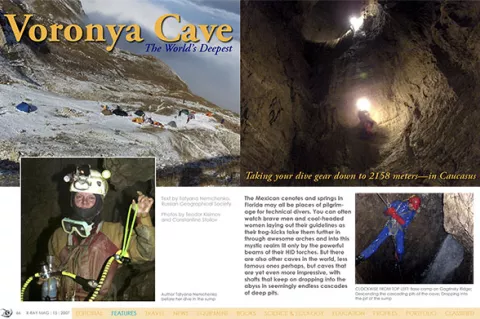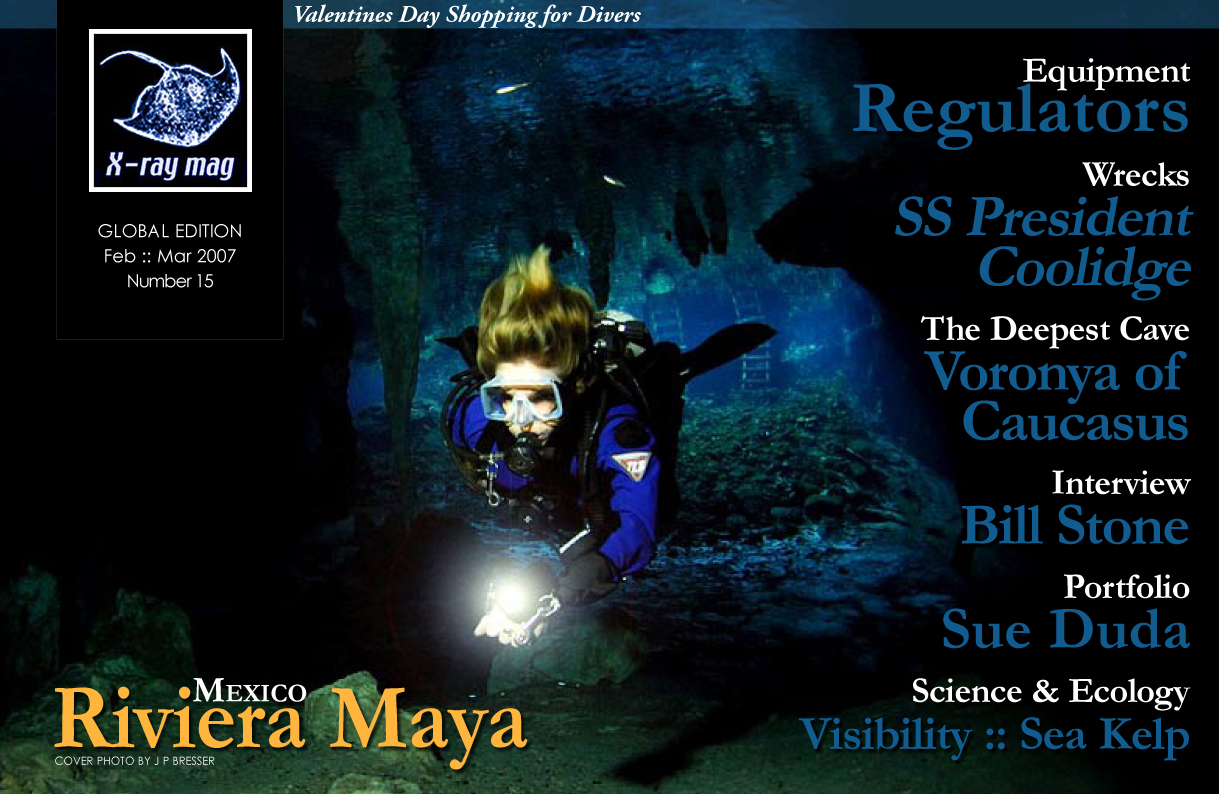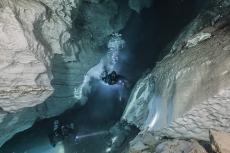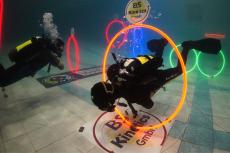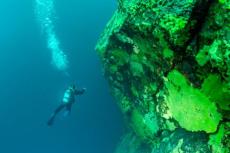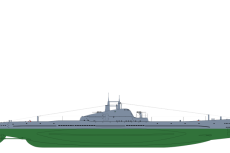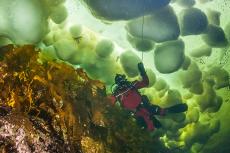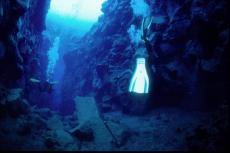The Mexican cenotes and springs in Florida may all be places of pilgrimage for technical divers. You can often watch brave men and cool-headed women laying out their guidelines as their frog-kicks take them further in through awesome arches and into this mystic realm lit only by the powerful beams of their HID torches. But there are also other caves in the world, less famous ones perhaps, but caves that are yet even more impressive, with shafts that keep on dropping into the abyss in seemingly endless cascades of deep pits.
Contributed by
In such caves there are passages, which are completely filled with water. Cave divers dive into these submerged tunnels, which are called sumps. These adventurers are not only divers, but capable mountaineers who are able to climb both upwards and rappel downwards on ropes. These people are very fit, as they need to be able to bring with them into the cave cylinders and all other sorts of heavy equipment.
Where?
But do you know where the deepest cave in the world is located? Believe it or not, it is actually very close to Europe. It is in Abkhazia, which was once a Soviet republic.
When Juri Kasjan, in 2004, declared that an expedition of the Ukrainian Speleological Association under his leadership had penetrated the cave of Krubera (Voronya)—which lies in the Gagrinsky range in the Caucasus—to the depth of 2080 meters, the world was awestruck. At that time, only about ten vertical caves around the world had actively been explored down to 1,500 meters. But this cave went to an astonishing depth of two kilometers! There are, at present, no comparisons or competition for Krubera (Voronya) cave’s status as the deepest cave in the world.
The entrance of the deepest cave is located in mountains at an altitude of 2240 meters, and the bottom point (as it is presently known) is about 100 meters above sea level. It is not surprising that there are sumps, or flooded passages (also called ‘siphons’) at the bottom of these caves. These sumps are the deepest in the world in regard to their position under the surface. So, it is no wonder that ambitious cavers and divers from the Ukraine and Russia have begun a private competition in attempting to dive through to the lower sumps and penetrate further into the cave system.
Kvitochka: 1980m below ground
The expedition detailed in this article, under the leadership of the same Juri Kasjan, took place October 2006. For a whole week, cave explorers moved all needed equipment to the bottom of the cave inxlusinf underground living and diving exploration for two cave divers, Gennady Samokhin and Juri Kasjan, who dove through the sump, Kvitochka, at the depth of 1980 meters underground. This sump was 20 meters long with a depth of four meters.
With them, they carried cylinders and diving equipment for the next dive. They descended into the next deep pit cave passage that wasn’t flooded. It seemed like there was just a little water here, so the caver divers followed it into unknown underground spaces.
Flooding
But then something unforeseen happened. Sudden warming of temperatures outside the cave led to fast melting of snow on the surface, leading to underground streams becoming overfilled by water. Waterfalls started roaring in the cave.
Fortunately, the natural cataclysm began at night, when the cave explorers were resting in the underground camp. The powerful roar that announced the beginning of the underground flood gave the cave explorers time to evacuate from their dangerous position. The water level rose rapidly in the bottom part of the cave, and further ...
(...)

